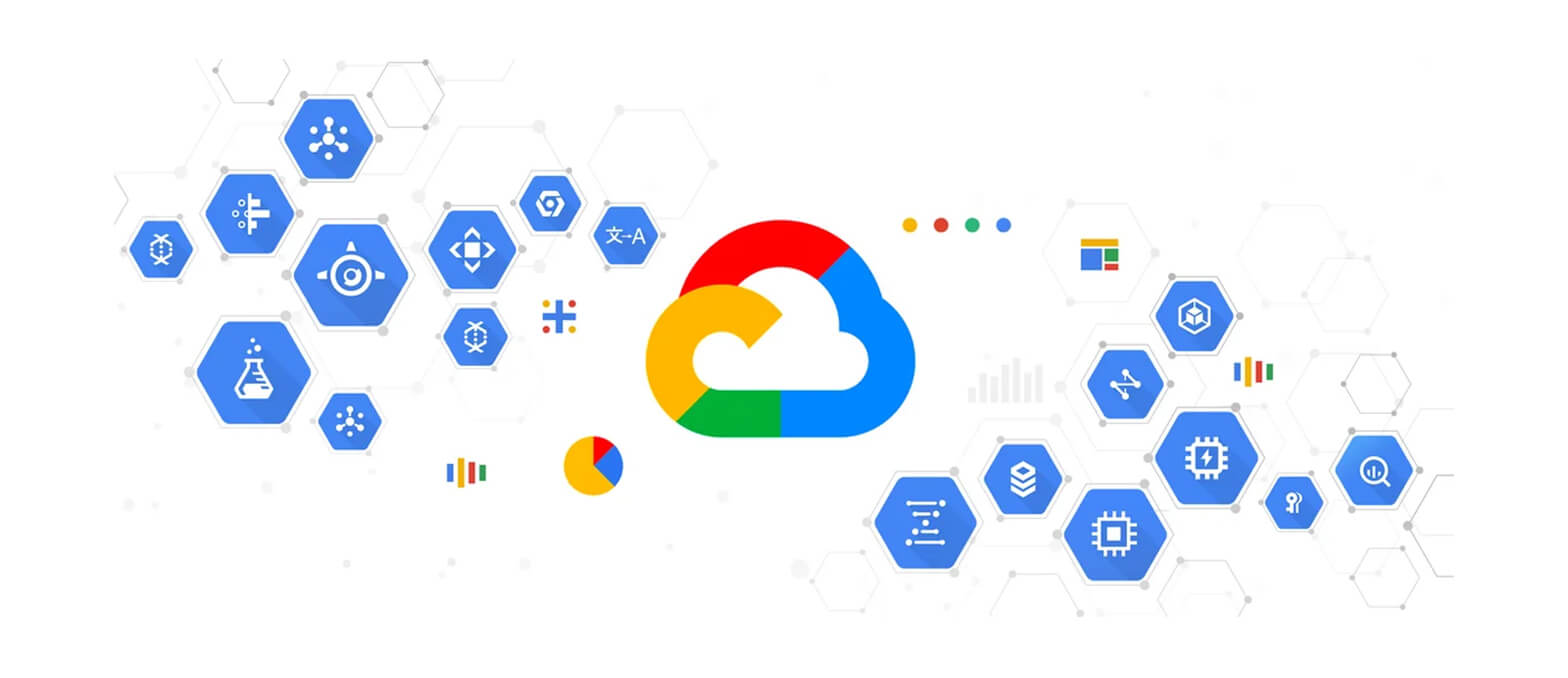Table of Contents
An inescapable fact is that every business has customers. Whether it’s a school, a hospital, or a law firm — customers are key stakeholders. Following Covid-19, the customer relationship is more important than ever. Because the world is now in an economic downturn yet technology is advancing at virtually light speed, customer care matters.
At present, building customer relationships and retaining their loyalty is what makes or breaks a business. Both the quality of the overall product or service and the overarching customer care combine to make customers feel important. Without doubt, businesses need to creatively and authentically nurture customers relationships while delivering a cutting-edge customer experience.
This is why Salesforce is such an important business software tool. Not only because of its heritage features but also due to the extent of features that make businesses stand out. Therefore the Venn diagram for excellence in customer experience are elements we observe to be:
- Robust, reliable systems
- Dedicated, prompt, and responsive customer interactions
- Data-centric care and resolutions
- Dynamic technical user experience (UX) and user interface (UI) offerings
This A3logics blog discusses the following analytical recommendations for tactically using a Salesforce CRM development to make customers feel important:
-
- Why Salesforce helps businesses focus on customer services
- Redesigning customer communications and ensuring every customer connection is targeted
- Delivering the business value proposition in every customer engagement
- Devising an exceptional customer experience
- Understanding the eight Salesforce CRM features that make customers feel valued
Let’s now explore these points in the resource article that explains why Salesforce is “the customer company”.
Unpacking exactly what businesses can expect investing in a Salesforce CRM development
At first, we’ll review the Salesforce CRM platform and its services range. Overall, Salesforce is the foremost software of its kind. Whether it’s customer relationship management (CRM) or sales management, Salesforce is the global standard for businesses of all sizes.
In fact, Salesforce is a multi-billion dollar company and in 2022 it was the world’s largest enterprise software firm. Further to this, Yahoo! Finance reports that Salesforce is a CRM that is projected to keep growing. Accordingly, “Salesforce helps companies of every size and industry to connect with their customers in new ways through existing and emerging technologies including cloud, mobile, social, IoT and artificial intelligence (AI).” All in all, Salesforce features make it the go-to for businesses looking to drive efficiency and improve customer experience.
Key Salesforce CRM Development features:
- Organizational streamlining
- Improved workflow
- Automation
- Cloud operations
- Customer database management
- Data reporting and analysis
- Accessibility
- Personalization
- Customizability
- Chatbot and AI functionalities
- Predictive analytics
- Case management
- 24/7 support
- Web services API
- Integration with third-party platforms
- Customer outreach
- Leads management
- Internal team collaboration across departments and within teams
- Operational apps
- Customer mobile and tablet applications
In their review of Salesforce for 2023, Forbes Advisor analyzes these features help suit businesses throughout their lifecycle. Jeff White and Cassie Bottorff explain, “Most of its products can be used as a stand-alone tool or they can collaborate with other Salesforce products to make a more powerful, and full, solution for your business.” Moreover these features are scalable so businesses can opt for components and modules as they grow and customer services advance.
Why Salesforce CRM development helps businesses focus on customer services
Now that we’ve unpacked Salesforce CRM features, we can cover how to apply this to customer service. Undoubtedly the software is the market leaders thanks to its all-in-one capabilities. TEC emphasizes, “Using Salesforce positions companies to improve customer retention, increase sales, and make well informed, data-driven business decisions.
Core customer service areas targeted in a Salesforce CRM development
- Simplifies communications
- Improves customer retention
- Customer service case management
- Inter-departmental workflows
- Data analysis
- Evaluating services effectiveness
- Personalization and customization
- Round-the-clock services
- Automation
- Reporting
Overall, these customer services are managed and upheld through Salesforce CRM development software:
- Robust, cutting-edge systems
- AI features
- Algorithm-embedded capabilities
- Security infrastructure
- Interactive and seamless database systems
- User-centric UX/UI
In view of these features, a Salesforce CRM development can be approached with the following best practice tactic:
1. Investing in the Salesforce CRM SaaS
2. Taking the base level Salesforce CRM and working with a development team to build custom features and integrate targeted modules
3. Deploying the Salesforce CRM through integration with existing third-party systems such as Google G Suite and Microsoft 365
Significantly current Salesforce CRM features are constantly evolving to level up customer services. Moreover, Digital Journal reports that in this era there is a tangible relationship between the customer experience and CRM technology. “As technology continues to advance and customer needs change, it is likely that CRM systems will continue to evolve to meet these needs.” Subsequently businesses can view a Salesforce CRM development as a fundamental component of all customer service in the 2020s.

Redesigning customer communications using a Salesforce CRM development
Undoubtedly the leading way Salesforce CRM development adds value for businesses is through elevating customer communications. Without a doubt, elevating customer communications leads to these core stakeholders having high-quality interactions and productive outcomes.
Both the ability it connect effectively with customers and simplifying communications without compromising on service delivery is highly desirable. Equally, it cannot be ignored that businesses building quality communications for customers into all operations will strengthen their value proposition. In order to redesign customer communication and make customers feel important, businesses need to thoroughly strategize their Salesforce CRM development.
Customer communications areas to focus on in a Salesforce CRM development
- Customer relationships channels
- Services follow-up style
- Marketing and value proposition copywriting
- Sales processes and ongoing sales care
- Resolutions and troubleshooting
Because Salesforce CRM features enable an all-in-one functional approach to customer communications, redesigning these can have positive results. Nevertheless getting the most out of these features is best left with a knowledgeable and experienced software company. Although it’s possible to deploy Salesforce CRM in no-code or low-code iteration, developers help sustainably maximize an investment. Furthermore, although customer communications are core to Salesforce CRM functionality, an integrated strategy for development and deployment reaps rewards.
Using a Salesforce CRM development to ensure every customer connection is targeted
Let’s now hone in on how these customer communication areas can be targeted in the Salesforce CRM development:
1. Customer relationships channels
Seeing that the goal is customer connection, let’s first look at relationships channels. Undeniably the scope and complexity of Salesforce customer relationships channels is especially beneficial. In summary, these are:
- Email correspondence including inquiries
- Phone calls
- Communities
- Social media channels
- Traditional media
Can businesses build a customer app with Salesforce CRM development services?
Irrespective of business departments all team members can work with customers across these channels. Consequently this maintains connections in all business areas at all times and helps with risk management. For example, eliminating missed communications nurtures all customer relationships and reduces any repeat service area mishandling.
2. Services follow-up style
Secondly, consolidating while organizing channels equips businesses to improve how they nurture relationships. Due to records of customer interactions across all communications areas, businesses can design services follow-up. For instance, they can introduce a proprietary follow-up that checks on how the customer is going with extra services. In the event that the customer has feedback or needs additional business, staff can present service options nurture their loyalty.
3. Marketing and value proposition copywriting
Thirdly, the Salesforce CRM helps maintain consistency in brand voice copywriting. When the voice is upheld in everything then customer connections can be targeted fruitfully. Whether it’s establishing a clear sense of the brand or delivering professional communications then strategy is embedded in every connection.
4. Sales processes and ongoing sales care
Fourthly, businesses that deliver all sales elements in a tactical way increase their conversion rates. At length, this will guide sales in a personable, sophisticated, and congruent manner. By the same token, designing all sales communication points — outreach, lead generation, closing, and after-sales care — positively engages customers. Compared to impersonal sales processes, dedicating design time to these communications will construct a sales experience telling customers they’re valued.
5. Resolutions and troubleshooting
Lastly, communications in sensitive areas should be as thorough and detail-oriented as possible. Explicitly ensuring customers are well-cared in interaction areas designed to fix issues and respond to problems is resoundingly imperative. Even if businesses are not at fault, areas associated with negative customer experiences will fortify their outlook. Unlike positive experiences, when a resolution is needed or a customer is in the midst of a challenge, it’s risky. In the long run, professional and respectful communication and channel choice in all areas of these resolutions or troubleshooting matters. Thus businesses can use the CRM to prioritize this connection type and follow-up with customers in personal, engaging ways.
Delivering the business value proposition in every customer engagement through the Salesforce CRM development
Overall there is significant overlap between how businesses convey their value proposition and fortifying this in customer engagement channels. For this reason, it’s a matter of urgency that businesses use engagements to show customers that:
- They consider them a stakeholder
- Their value proposition is consistent and upheld in all operational areas
- It’s important to them that it’s a positive customer experience
Above all, businesses investing in a Salesforce CRM development should embed their value proposition in the following customer-oriented areas:
Communication design
Due to how comprehensive the CRM is, businesses can build out every area they intend to use. Altogether this helps with creating engagement templates in all channels and training all staff in brand language. As a result, this will help with establishing brand standards customers and other stakeholders understand. Because all communications are tracked in Salesforce, it’s also possible to review effective communication against ineffective engagements.
CRM platform iterations
Choosing the various Salesforce CRM integrations embeds the value proposition for customers in meaningful ways. If it’s a business where customers are more traditional then they might require more focus on phone services and access. Contrarily, if it’s a highly digital customer group then it’s worth introducing the CRM services in a user-centric app. Chiefly, the key objective for businesses is explaining the platform accessibility points to their customers and showing they understand needs.
Services availability
Deciding how to invest in customer services is another customer service pillar. Therefore just as platform iterations tie in to services, businesses must justify availability according to their value offering. In spite of the pressure to offer round-the-clock support, businesses can opt to design their value proposition differently. For instance, services might be restricted but customers have a dedicate serviceperson who personalizes support and follows up consistently. In that case, it’s not essential to offer services in a particular way. Even so, it is essential for businesses to decide on services strategically and meaningfully demonstrate the value-add for customers.
UX/UI
The value proposition in user experience and user interface is mostly for businesses with Salesforce CRM user products. For example, businesses that have a web portal and mobile application products for customers. Accordingly, businesses need to analyze then apply their value proposition in the visual UI elements and the immersive UX. Given that this is a high-level process, development professionals can work collaboratively with businesses to achieve this for ROI. Given that, it’s also important to note that the staff CRM UX/UI will affect value proposition delivery. Because staff need to uphold the value proposition to customers, their UX/UI should be of the same calibre. Consequently they are more professional and the synthesis of services offering with services delivery is more tangibly embedded.

Devising an exceptional customer experience in the Salesforce CRM development integration
Bringing the customer experience into the Salesforce CRM development phase is a step that cannot be overlooked. In short, this is because the customer experience surrounds the customer service process and it will profoundly affect customer satisfaction. Simultaneously, customers feeling important is often established through the details incorporated into service delivery and process elements.
In terms of using these customer experience realities to plan Salesforce CRM development integration, businesses need to consider:
- Existing customer service processes — Reviewing how the platform will affect or redesign the customer service customers are familiar with.
- Evaluating the customer base — Analyzing if all customers will be supported in the platform and mapping all demographics against the features being chosen.
- Leading customer problems with current offerings — Deliberating over platform features and how these can be used to address then resolve these problems to uphold value propositions.
- Consistent industry problems for customers — Assessing how the platform helps with overcoming problems and if this is a viable business tactic for organizational marketing.
Incorporating the value proposition into platform features — Preparing all processes to be in line with the value proposition, to fulfil customer expectations, and strategically choose all features. - Introducing customers to the platform — Designing the integration process with customer communications that explain the value-add of the CRM plus any customer-facing elements.
Understanding the top 8 Salesforce CRM development features that make customers feel valued
For the final section of this article, let’s look at the eight CRM features businesses can leverage in their operations. In essence, businesses that understand and utilize these features can really get the most from the Salesforce product range. Furthermore they can keep scaling their platform and benefit from features through tactic-driven development. Equally Martin Gessner asserts for Focus on Force that Salesforce CRM widely handles client concerns to build meaningful value. “It necessitates increasing sales, but it is more than simply selling a product or a service to current and potential customers.” Thus we’ll now review and explain how features create a customer feeling of value leading to businesses growing.
Eight Salesforce CRM features that directly impact customers feeling valued
- Salesforce Service Cloud
- Data Security
- Outreach
- Follow-up
- Omni-channel options
- Customization
- Automation and on-demand UI
- Marketing Strategy
Salesforce Service Cloud
Firstly this Salesforce product is the number one way businesses can provide top tier customer service. Undoubtedly this product is not just a feature. However its comprehensive support components mean businesses can consolidate nearly all customer-oriented activities in a robust, user-friendly UI. Both for how it enables staff to fulfil customer service and for how it manages all support and responses activities. Further to delivering exceptional customer service, businesses can integrate with add-on products and third-party software to enhance experiences. As has been noted, introducing extensive customer-oriented features contributes to customers feeling valued in dynamic ways. Correspondingly the way this product is designed to help customers through UI, organizational infrastructure, and diverse service delivery is invaluable.
Data Security
Keeping all stakeholder data secure is a must for all businesses in the 21st century. Both protecting user privacy and minimizing risks of data being held hostage is a leading responsibility businesses have. Due to compliance requirements for cybersecurity, data protection, and privacy laws, businesses need to consider their customers’ needs. Unquestionably data security preferences are nuanced and largely down to the individual customer. On the one hand, keeping data secure is a legal obligation for businesses. On the other hand, risk management and demonstrating professional initiatives through using the secure Salesforce CRM development platform features matters. Moreover, communicating that customer data is safely managed reiterates that businesses are operating with cybersecurity and data protection best practice.
Outreach
Accordingly, the ability for businesses to outreach meaningfully can create real value for customers. Generally customers might need to go to businesses to experience quality services. Whether that’s a general interaction or pursuing an outcome, customers might need to approach customers to gain their desired experience. Conversely the way a Salesforce CRM development equips businesses to design and deliver purposeful and useful outreach is highly beneficial. Overall the outreach can happen via the secure CRM platform with communication that is on-brand and strategic. Furthermore, the CRM can be used to bring in user data and personalize the outreach. For example, this masked outreach customized and can refer to user activity including past purchases, enquiries, and browsing.
Follow-up
After effective, well-structured outreach, using the Salesforce CRM development to manage subsequent follow-up adds cumulative value for customers. Summing up, this is a supportive activity that can help customers make decisions and gain further information with zero pressure. That is to say that follow-up is a business tactic giving customers an interactive channel to engage with personnel. On the whole, giving customers various support on-ramps can help them feel that businesses are readily and consistently available. To that end the way the CRM enables follow-up as its own case management shows that customer care extends beyond resolutions and sales.
Omni-channel options
The range of accessibility options for Salesforce CRM means customers can properly work with businesses in an unrestricted way. Accordingly, businesses can also design and implement a suite of customer-oriented channels based on their market data. Until now, most businesses didn’t have access or even wide-reaching technical options for customer connections. Therefore omni-channel options for customers, such as web and mobile application products, invites them to engage with businesses easily. Additionally this also allows service personnel to care for customers from wherever and whenever. For instance, the Salesforce cloud functionalities enable remote teams as well as services in the field. In essence this achieves high level customer-oriented activities that are seamless, streamlined, and consistent with a quality userflow. Regardless of the individual, this shows that the business wants customers to feel comfortable operating according to their own preferences.
Customization
Data shows that customers everywhere prefer a product they can personalize. Both the option to customize and the uniqueness of a tailor-made experience are consistently shown as valued UX characteristics. In addition to this, customization can lead to a more effective UI that leads to happier customers. Unlike traditional customer UI, an agile and intelligent customizable userflow results in customers who have a better brand experience. At the same time this also frees business resources to better customize communications from general support to complex resolutions. In addition to these benefits, customization can actually help customers gain exactly what they need from a brand interaction. Thereupon this leads to more accurate offerings for each customer derived from user activity data the Salesforce CRM will gather.
Automation and on-demand UI
Overwhelmingly cutting-edge technology is a huge drawcard for users. Both the improvements to UX and the intelligent customer benefits help deliver extensive value to stakeholders on all sides. In particular for customers, automation achieves faster and even more accurate service outcomes. As an illustration, dynamic UI means customers can receive business’ value proposition any time and any place. Another key point is that this feeds into staff customer service delivery, too. Because lower level tasks are streamlined, this means more complex tasks can have more resource allocation. Provided that this is possible, customers therefore receive better care and feel important as team members are more dedicated.
Marketing Strategy
Finally, the introduction of a Salesforce CRM development ensures businesses implement a smarter and more authentic marketing strategy. At present, marketing strategies can be hit and miss — particularly those that are more overtly outreach-based. Whether it’s customized communications or engaging social media campaigns, marketing planned and deployed through Salesforce can be much more effective. All of a sudden, businesses have the data and operational interface to conceive marketing that is creative and on-brand. Without a doubt, the consolidation of all business areas gives marketing teams insights into where opportunities lie for customer engagement. Following this they can devise outreach like email blasts and calls to action that actually work and aren’t bombarding customers. Afterwards, integrating all CRM elements and customer services can result in customers properly benefitting from the value proposition.
Conclusion
In conclusion, when businesses wield Salesforce as a tool they are taking task-oriented products to devise better stakeholder processes. Thereafter, businesses give customers an immersive brand experience that makes them feel important. Owing to businesses being able to deliver this consistently and thoroughly, this sustains a customer experience that’s qualitative and quantitative.
Seeing that this deliverable customer offering is scalable over time, businesses choosing a Salesforce CRM development are making an investment. All in all this investment is a strategy and it should be integrated on the same principles. Prior to any other tasks, working with a development agency will level up this investment as every component is intentional. Because strategy designs a customer experience, the tools behind it should always be treated the same. In order to do this, businesses must review their objectives then plan their software choice. Accordingly, the final deployable CRM will wow customers, support employees, and achieve sustainable business growth.
Frequently Asked Questions (FAQs)
What businesses can use a Salesforce CRM development?
All businesses can use a Salesforce CRM development. Regardless of the business size or industry, one major value of the software is how widely effective it is. Whether it’s for an e-commerce business or a medium-size start-up, businesses can benefit from Salesforce. In order to begin, businesses can start with an A3logic Salesforce CRM development consultation learning from experienced developers.
How long is the Salesforce CRM development process?
The Salesforce CRM development process can be planned in line with the business client’s needs. Furthermore, businesses can immediately experience a return on investment because the platform is extremely robust with limited customizations. Nevertheless, most businesses benefit from custom integration in addition to the core Salesforce development and its features.
What if a business needs to change platform features after launching the Salesforce CRM development?
Salesforce is an especially powerful robust CRM platform because it is scalable. Both the base platform and the extensive Salesforce products suite are continually becoming more powerful. Consequently, all businesses can invest in Salesforce then prepare to scale as their operations evolve and they add new offerings. Equally, as new Salesforce features and products develop, businesses can invest in and integrate these components and technologies.
Can businesses build a customer app with Salesforce CRM development services?
All businesses can invest in the Salesforce product suite as per their needs. For example, if a business is preparing to grow their operations and scale in the long-term, this is easy. Similarly, all businesses can invest in Salesforce Mobile Application Development as part of their Salesforce CRM development. Overall, a Salesforce app is a worthwhile investment that works on mobile and tablet with online and offline access.


![Top 10 Software Development Security Challenges in Modern Software Development [2025]](https://www.a3logics.com/wp-content/uploads/2023/12/Top-10-Software-Development-Security-Challenges-in-Modern-Software-Development-2024.webp)



